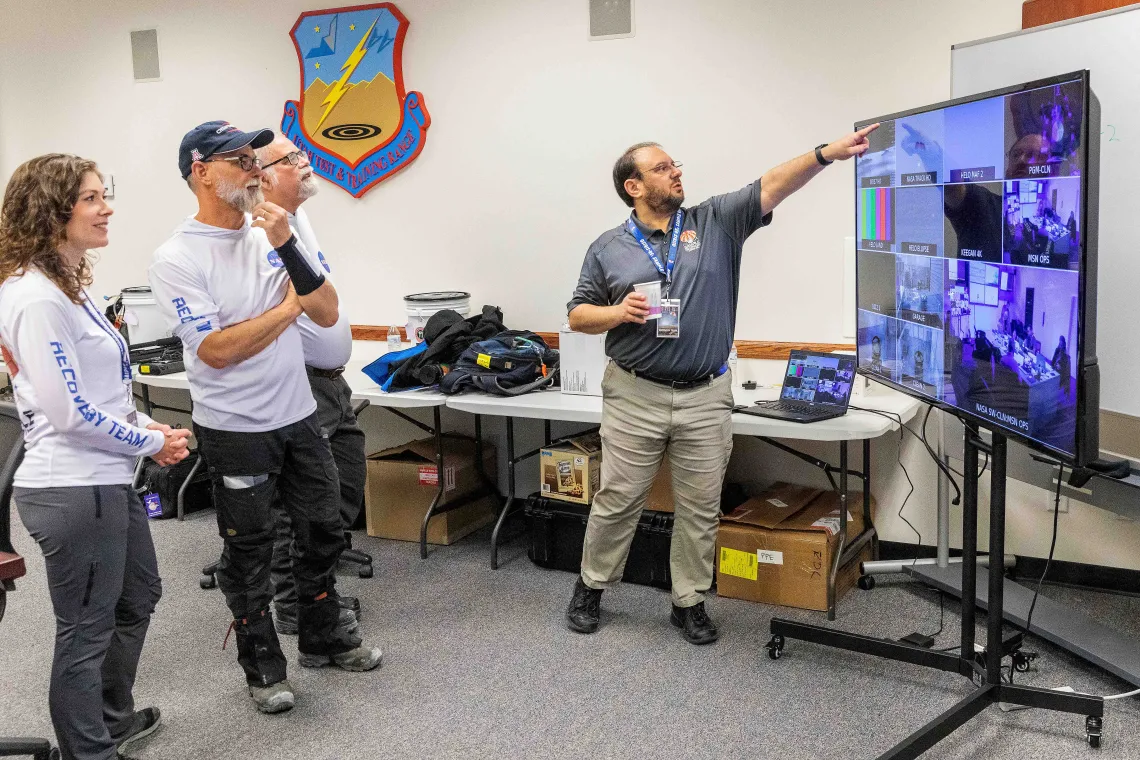Asteroid Bennu Speaks
A first look at NASA’s asteroid Bennu sample suggests the presence of water and carbon.

Principal investigator Dante Lauretta, on-scene commander of recovery Jasmine Nakayama, and NASA sample-return capsule science lead Scott Sandford of the OSIRIS-REx team
Photos: Chris Richards
Studies of the sample from 4.5-billion-year-old asteroid Bennu that was brought to Earth by NASA’s Wildcat-led OSIRIS-REx mission show evidence of water and high-carbon content, together indicating that the building blocks of life may be found in the rock.
NASA announced the finding on Oct. 11 from its Johnson Space Center in Houston, where leadership showed off the sample material for the first time since it landed in the Utah desert on Sept. 24. The finding was part of a preliminary assessment by the OSIRIS-REx team.
“As we peer into the secrets preserved within the dust and rocks of Bennu, we unlock a time capsule that offers profound insights into our solar system’s origins,” said Dante Lauretta, OSIRIS-REx principal investigator and University of Arizona Regents Professor of planetary sciences. “We draw closer to unraveling our cosmic heritage.”
Among the motivations driving the mission is the desire to understand the origins of Earth’s habitability, Lauretta said. The current understanding of what makes a world suitable for life is abundant surface liquid water.
“When Earth formed, especially after the impact that spun off the moon, the water and carbon were lost from our planet,” Lauretta added. “Our leading hypothesis is that asteroids later delivered the building blocks of life.”





